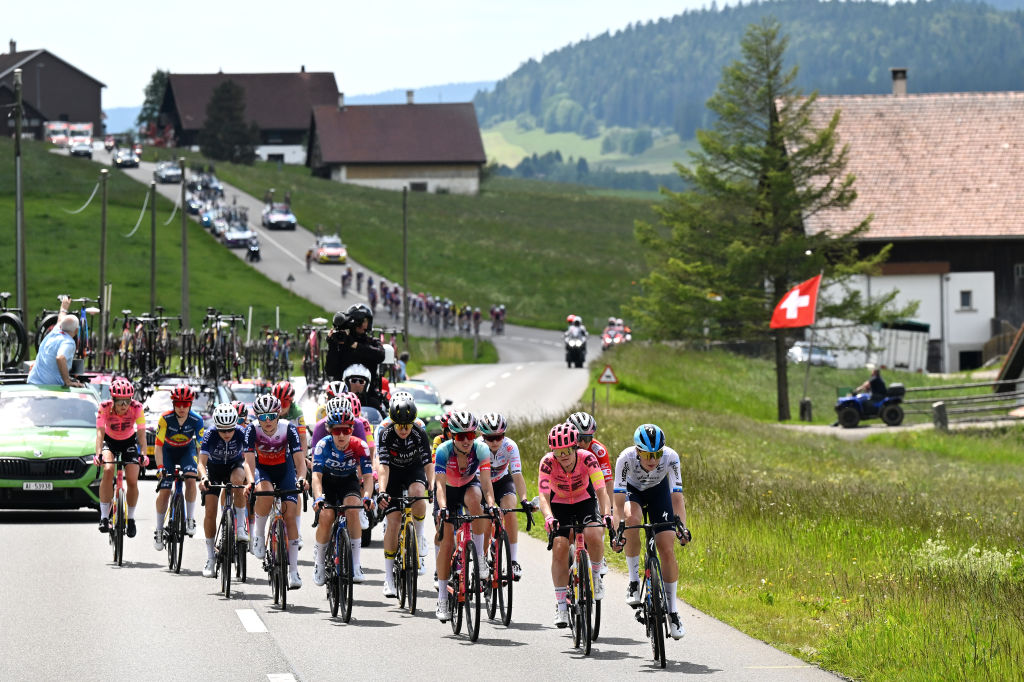The Tour de Suisse will equip all bikes and vehicles in the race convoys at their men’s and women’s events this month with GPS trackers as a way of quickly alerting the organisers to crashes.
The move comes after the crashes and deaths of Gino Mäder at the 2023 Tour de Suisse and Muriel Furrer at the junior women’s road race at the World Championships in Zürich last year. Tour de Suisse race director Olivier Senn was also the director of the latter event.
The technology will be in place at the men’s Tour de Suisse (June 15-22) and the Tour de Suisse Women (June 12-15).
A report by the Zürich newspaper Tages-Anzeiger confirmed the news announced on Wednesday. Both races will feature a security centre with access to the GPS signals, plus all television feeds and a weather radar.
According to the report, an alarm will sound if any GPS tracker stops moving for 30 seconds, if the speed of a tracker changes abnormally, or if a tracker leaves the road. While races have used tracking for live timing, the full tracking of all riders and the alarm system is a first in cycling.
The innovations have been paid for by the Tour de Suisse organisers at a cost of CHF50,000 (£44,941 / $60,965).
Senn had brought up these measures in an interview back in May, noting that the Tour de Suisse “will be the first bike race in the world to introduce comprehensive rider tracking.”
He said that teams would be able to opt out due to concerns over the “possible commercial use of the collected data”, but he hoped that all teams would opt in to using the trackers.
Participation is voluntary for the teams, but I hope that every team will take part,” he said. “Each bike will be fitted with a small tracker that will sound an alarm in the event of certain anomalies, such as if the bike does not move for 30 seconds, leaves the route or abruptly changes speed. In such cases, we are notified immediately and can react.
“We will also use trackers in the convoy, as each radio is equipped with a tracker. The information is gathered in the safety command centre where we can monitor the entire situation and intervene immediately if necessary.”
The move to introduce the technology comes in the wake of Furrer’s crash last September. The 18-year-old suffered serious head injuries and died after an unseen off-road crash near Küsnacht on the Worlds finishing circuit.
It’s unknown exactly how long Furrer lay injured before she was discovered and treated. The Tour de Suisse’s alarm system would, in theory, enable the immediate detection of any riders caught in similar situations and could help speed up reaction times by organisers and emergency services to incidents.














